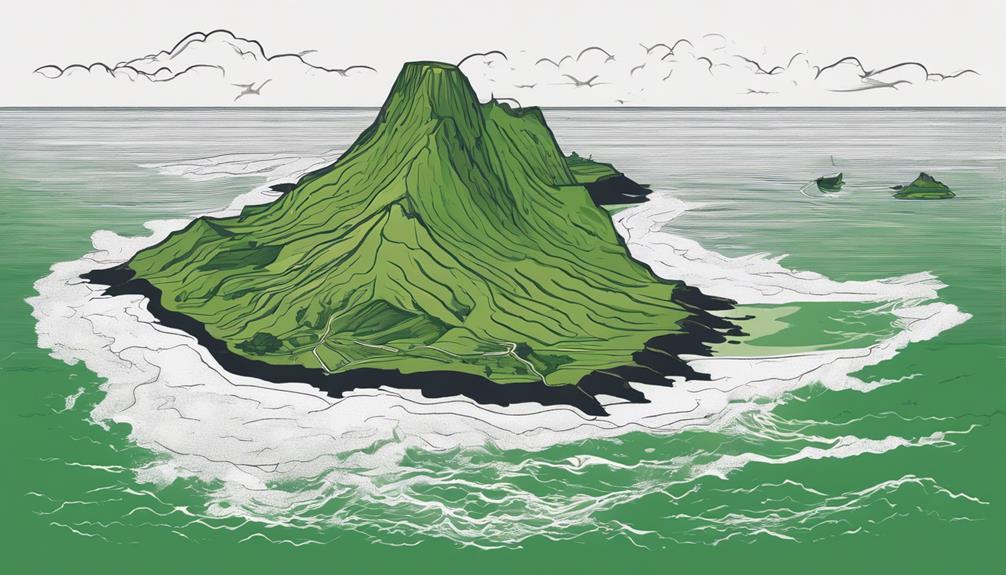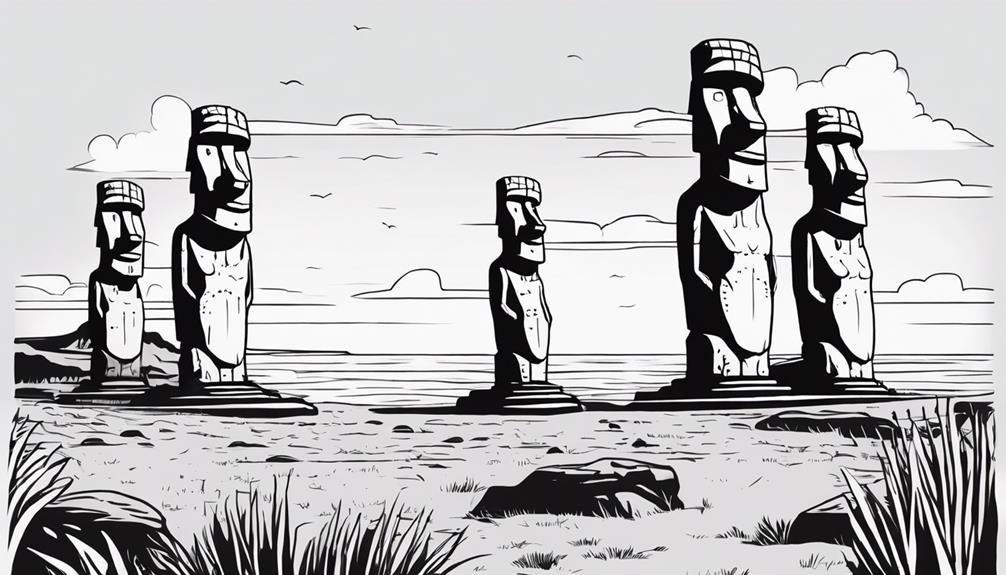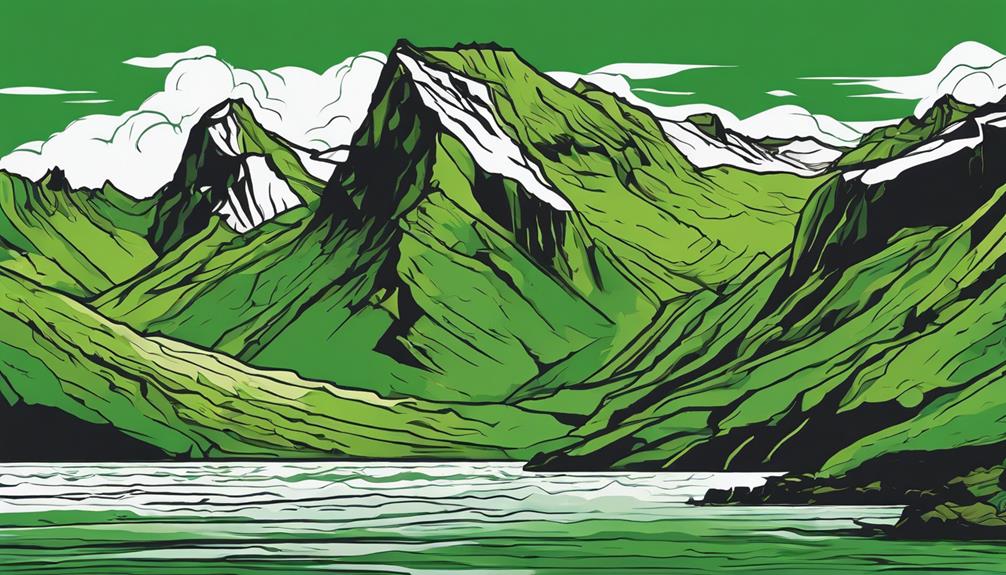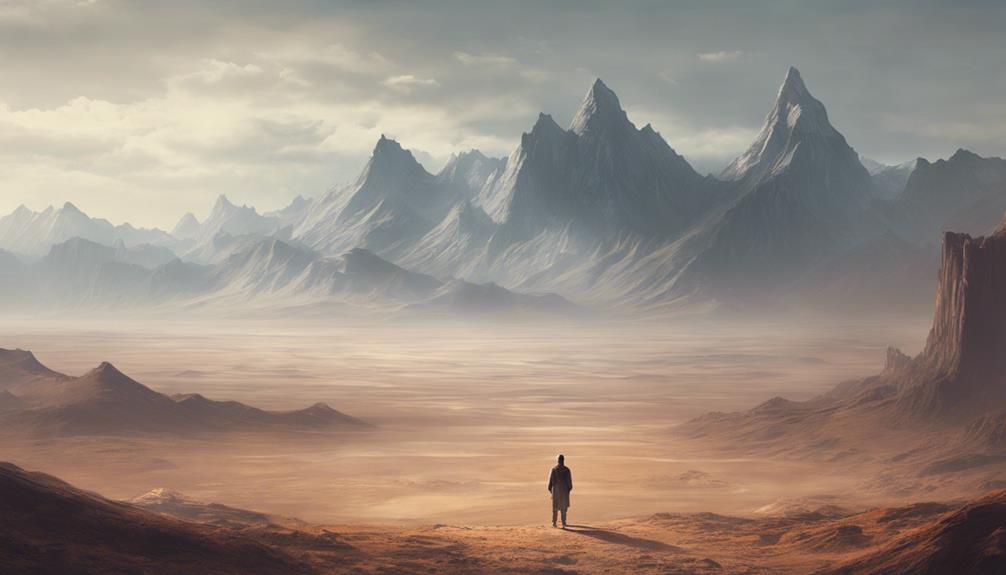When contemplating the most remote place on Earth, one inevitably ponders the vast expanse of solitude that defines such a location. The Tibetan plateau, nestled at 34.7°N, 85.7°E, emerges as a beacon of seclusion, requiring arduous journeys over treacherous terrain and formidable altitudes. Yet, is this truly the pinnacle of isolation, or do other corners of our planet harbor even greater remoteness? As we delve into the depths of isolation and the factors that contribute to this phenomenon, we uncover a tapestry of distant lands that beckon exploration and contemplation.
Key Takeaways
- The Tibetan plateau exemplifies extreme isolation, requiring a three-week journey on foot from cities like Lhasa.
- Remote islands like Tristan Da Cunha and Pitcairn Islands showcase extreme geographic isolation.
- Remote human settlements like Ittoqqortoormiit and Supai Village highlight limited accessibility and isolation.
- Remote exploration in locations like Devon Island and Kerguelen Islands offers insights into unique ecosystems and cultural adaptability.
Understanding the Concept of Remoteness

The concept of remoteness, essential in geographic analysis, delineates the degree of isolation of a particular location based on factors such as distance from urban centers, terrain ruggedness, and transportation accessibility. The most remote place on Earth, located on the Tibetan plateau at 34.7°N, 85.7°E, stands as a prime example of extreme isolation. This spot requires a three-week journey on foot from cities like Lhasa or Korla, making it about 20 days away from the nearest city with only one day of the journey accessible by car. The rough terrain and high altitude of this isolated location contribute significantly to its inaccessibility. Identified by former European Commission researcher Andy Nelson, the Tibetan plateau exemplifies the challenges posed by remote places on Earth. Factors like terrain, road access, and altitude are crucial in determining the level of remoteness of a place, shedding light on the diverse range of human habitation across the globe.
Factors Influencing Remoteness
Factors contributing to the degree of remoteness of a location include its distance from urban centers, accessibility of transportation networks, terrain characteristics, and level of geographic isolation.
- Distance matters: The farther a location is from major cities or populated areas, the more remote it tends to be.
- Transportation accessibility: Limited access to roads, railways, shipping routes, or air transportation can increase the isolation of a place.
- Challenging terrain: Areas with rugged landscapes, high altitudes, or dense forests can pose obstacles to reaching them, enhancing their remoteness.
- Geographic isolation: Being situated in regions like the southern Indian Ocean, as seen with the Desolation Islands, or on remote islands can significantly contribute to the isolation of a place.
In understanding remoteness, it becomes evident that the interplay of these factors shapes the degree of isolation experienced by a location. Accessibility and connectivity play crucial roles in determining the remoteness of a place, with remote islands and areas like the Desolation Islands in the southern Indian Ocean exemplifying extreme seclusion due to their geographic characteristics.
Tristan Da Cunha: A Remote Haven

In examining the exceptional remoteness of Tristan Da Cunha, it becomes evident that this isolated archipelago stands as a unique haven in the vast expanses of the South Atlantic Ocean. As the most remote inhabited archipelago globally, Tristan Da Cunha is located in a position of extreme isolation, making it a distinctive settlement in the South Atlantic region. The main settlement, Edinburgh of the Seven Seas, is home to a small population of approximately 241 residents who have chosen to live in this remote setting. Accessible solely by a challenging six-day boat journey from South Africa, the island faces limited transportation options, further emphasizing its seclusion. The economy of Tristan Da Cunha relies primarily on farming, fishing, stamp sales, and modest tourism, showcasing its self-sufficiency despite its remote location. Visited only a handful of times a year by fishing boats, Tristan Da Cunha's isolation is underscored by its sporadic external connections, highlighting the unique and remote nature of this inhabited outpost.
Pitcairn Islands: Isolation in Paradise
The Pitcairn Islands stand as a testament to a unique historical narrative, rooted in the mutiny of the HMAV Bounty. Despite their idyllic setting, these islands present significant challenges due to their extreme isolation in the vast expanse of the Southern Pacific Ocean. Understanding the complexities of sustaining life in such a remote location sheds light on the resilience and adaptability of the Pitcairn community.
Pitcairn's Unique History
Nestled in the vast expanse of the Pacific Ocean, Pitcairn Islands' unique history unfolds as a testament to isolation in a paradisiacal setting.
- Pitcairn Islands are home to the descendants of the mutineers of HMAV Bounty, creating a community with a rich seafaring heritage.
- With a population of around 50 people, Pitcairn Island stands as one of the least populated places on Earth, fostering a close-knit society.
- Limited access to Pitcairn Island, primarily through quarterly shipping vessels from Mangareva in French Polynesia, contributes to its isolation.
- The Pitcairn Islands' remote location offers unparalleled views of the cosmos, leading to its designation as a Dark Sky Sanctuary.
Challenges of Isolation
Amidst the pristine beauty of the Southern Pacific Ocean, the Pitcairn Islands present an intriguing case study in the endurance of human resilience against the backdrop of extreme isolation. Situated as one of the most remote places on Earth, the challenges of isolation on the Pitcairn Islands are profound. With limited accessibility, relying solely on a quarterly shipping vessel, residents and visitors alike face the realities of being distanced from the rest of the world. However, this isolation also offers a unique opportunity for contemplation and connection with nature. As a Dark Sky Sanctuary, the Pitcairn Islands provide unparalleled views of the cosmos, attracting stargazing enthusiasts seeking the serenity and clarity of the unpolluted night sky. Despite the challenges, the isolation of the Pitcairn Islands offers a rare chance for individuals to experience solitude and wonder in a truly remote setting.
Easter Island: Mystique of Isolation

Easter Island's enigmatic allure stems from its isolated location in the southeastern Pacific Ocean and the perplexing ancient civilization that left behind the imposing Moai statues. These colossal stone figures, some weighing up to 80 tons, stand as a testament to a civilization shrouded in mystery.
- Archaeological Enigma: The Moai statues of Easter Island continue to baffle researchers, raising questions about how an ancient society managed to carve, transport, and erect these massive stone sculptures.
- Cultural Isolation: The remote location of Easter Island contributed to the unique development of its civilization, leading to distinctive traditions, art, and beliefs that are still being unraveled by modern archaeologists.
- Tourist Attraction: Despite its isolation, Easter Island attracts visitors from around the world who come to witness the awe-inspiring Moai statues and delve into the island's rich history and culture.
- Preservation Efforts: Designated as a UNESCO World Heritage Site, Easter Island is working to protect its archaeological sites and cultural heritage, ensuring that future generations can continue to marvel at its enigmatic past.
Devon Island: Arctic Solitude
Located in Canada's Nunavut Territory, Devon Island stands as the largest uninhabited island in the region, offering a stark and isolated Arctic landscape for scientific exploration and research endeavors. Scientists are drawn to Devon Island for its Mars-like terrain, making it a prime location for conducting Mars simulation expeditions. NASA, the American space agency, has utilized Devon Island as a testing ground for space tools to simulate conditions that astronauts might experience on Mars. The cold, rocky, and desolate environment of Devon Island closely resembles the harsh conditions found on the Red Planet, providing researchers with a valuable opportunity to test space technologies and study extreme environments. Due to its extreme isolation and challenging terrain, Devon Island serves as an ideal setting for advancing our understanding of space exploration and conducting innovative scientific research in preparation for future missions to Mars.
Kerguelen Islands: Remote Wilderness

In the realm of remote and uninhabited territories conducive to scientific exploration, the Kerguelen Islands present a pristine wilderness teeming with unique ecological features and research opportunities. Situated in the remote South Indian Ocean, the Kerguelen Islands, also known as the Desolation Islands, are home solely to French scientists and local wildlife, devoid of a permanent civilian population. Access to this remote wilderness is limited, mainly by boat, with ticket prices for tourists on the Marion Dufresne averaging around $18,000. The islands boast a harsh climate, extreme isolation, and a distinct ecosystem, making them a haven for scientific study.
Key Points:
- Isolated Location: The Kerguelen Islands are remote, situated in the South Indian Ocean, making them challenging to access.
- Exclusive Inhabitants: Only French scientists and local wildlife reside on the islands, with no permanent civilian population.
- Unique Ecosystem: The islands are characterized by a distinct and diverse ecosystem, attracting researchers interested in its biodiversity.
- Scientific Research Hub: The Kerguelen Islands offer unparalleled research opportunities due to their pristine wilderness and unique ecological features.
Exploring Remote Human Settlements
Remote human settlements, scattered across the globe, offer unique insights into the adaptability of communities in extreme and isolated environments. Tristan da Cunha, in the South Atlantic Ocean, holds the title of the most remote inhabited place on Earth, reachable only by a lengthy six-day boat journey from South Africa. Pitcairn Island, a British Overseas Territory in the Southern Pacific Ocean, is home to around 50 individuals and is renowned for being the residence of descendants of the mutineers of HMAV Bounty. Ittoqqortoormiit in Greenland stands as a remote settlement with approximately 450 residents, encircled by uninhabited lands, mountains, and glaciers, accessible solely by helicopter to the nearest airport. In the contiguous 48 states, Supai Village in Arizona emerges as the most isolated community, nestled within Havasu Canyon and housing about 450 inhabitants, with access limited to helicopter transport or an eight-mile hiking trail. Adak in Alaska, the westernmost point in the U.S., sustains a population of roughly 171 people and offers unique activities like birdwatching, caribou hunting, and hiking owing to its subpolar oceanic climate.
Frequently Asked Questions
Where Is the Most Remote Location on Earth?
In the realm of uninhabited islands, extreme isolation, remote wilderness, and isolated communities, the most remote location on Earth remains a subject of intrigue. Defined by its rugged terrain and high altitude, this isolated spot poses a significant challenge for access. Its existence highlights the harsh reality of extreme remoteness, requiring meticulous planning and endurance to navigate the inhospitable conditions that characterize this distant outpost.
What Is the Most Remote Land?
In the realm of remote lands, the world boasts a plethora of isolated enclaves. From remote islands to uninhabited deserts, lonely mountains, and isolated villages, the Earth harbors a diverse array of remote locations. These areas, characterized by their seclusion and limited accessibility, serve as testaments to the vast and varied landscapes our planet has to offer. Each of these remote lands contributes to the rich tapestry of Earth's geography.
What Is the Most Empty Place on Earth?
In considering the most empty place on Earth, one may envision deserted islands, isolated deserts, barren tundra, or vast empty wilderness areas. These locations are characterized by minimal human presence, lack of infrastructure, and limited resources, contributing to their extreme emptiness. The remoteness and isolation of these areas create unique challenges for access and habitation, highlighting the stark contrast between the vast emptiness of such landscapes and the bustling human world elsewhere.
What Is the Most Remote Place in the Us?
In the vast expanse of the United States, the Alaskan wilderness stands out as one of the most remote regions. Here, deserted islands, isolated communities, and uninhabited regions create a landscape of unparalleled seclusion. Accessible only by air or sea, these areas offer a glimpse into nature's raw beauty and untamed wilderness. The Alaskan wilderness embodies a sense of isolation and ruggedness that defines the essence of remoteness within the nation.
Conclusion
In conclusion, the most remote places on Earth offer a unique sense of isolation and solitude, like hidden gems waiting to be discovered in the vast expanse of the planet. These locations, such as the Tibetan plateau and Tristan Da Cunha, serve as reminders of the untamed beauty and resilience of nature. Exploring these remote destinations allows us to appreciate the sheer magnitude of Earth's diversity and the ability of life to thrive in even the most extreme conditions.
